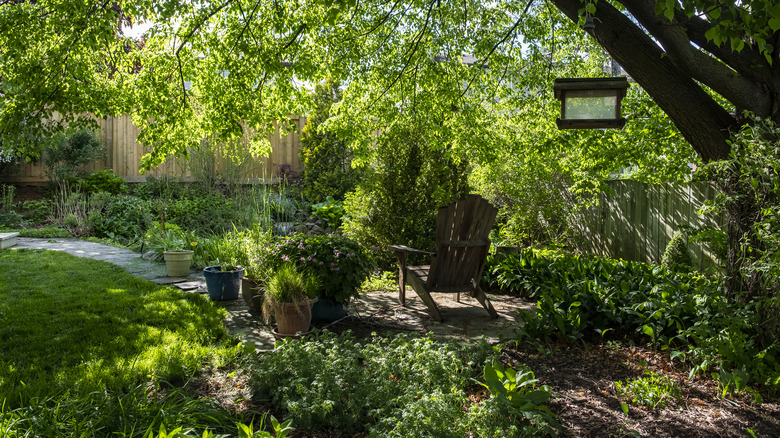The Gorgeous White Perennial Ground Cover That Attracts Butterflies To Your Yard
Finding ways to keep your garden full of pollinator friendly flowers can be a challenge as the temperatures start to drop, especially if you're looking for plants that thrive in dry, shady conditions. It isn't a lost cause, though, thanks to white wood asters (Eurybia divaricata). They, like many other types of asters, are perfect for attracting pollinators to your late summer garden.
Native to Eastern North America, white wood asters thrive in zones 3 through 8, where their dainty white flowers can twinkle well into the autumn months, providing food for pollinators and birds after many of the summer flowering plants are gone. They are even a host plant for pearl crescent butterflies. This means the butterflies lay their eggs on the asters, and the asters' leaves serve as a food source for the caterpillars. Thanks to their tolerance for dry locations and deep shade, white wood asters can also make a good addition to gardens located under trees or in other challenging spots. White wood asters can even be used as a taller ground cover plant thanks to their fast-spreading rhizomes.
Caring for white wood asters
With a maximum height of 3 feet and a width almost as significant, white wood asters quickly fill in dreary, barren spots in your yard, transforming them into whimsical patches of flowers and butterflies. It isn't just white wood asters' flowers that are stunning, though — they also have distinctive heart-shaped leaves, which makes them easy to tell apart from other native asters that bloom around the same time. White wood asters can be purchased as young plants or as seeds, though they, like many perennials, can take a few years to mature.
White wood asters are easy to care for, but putting some thought into their location will save you from problems down the road. As we mentioned, when deciding on a place to grow your white wood asters, be aware that they can spread quickly thanks to their rhizomes. Choose a location where they have plenty of space to thrive. While white wood asters can flourish in a variety of soil types, they grow best in well-draining soil. They also prefer good airflow as they can be vulnerable to powdery mildew and aster wilt.

